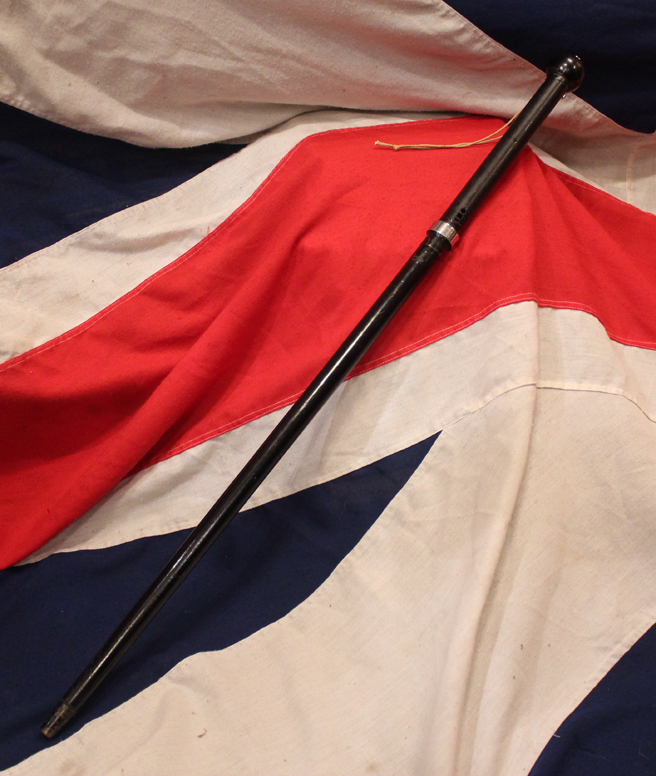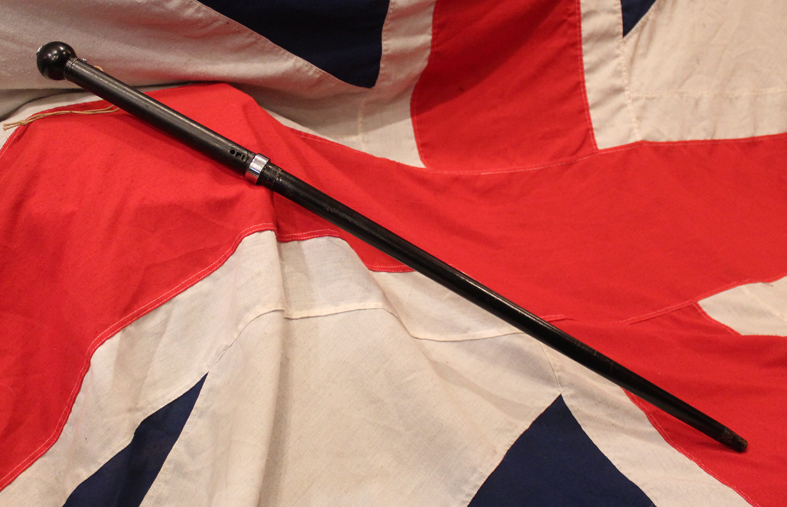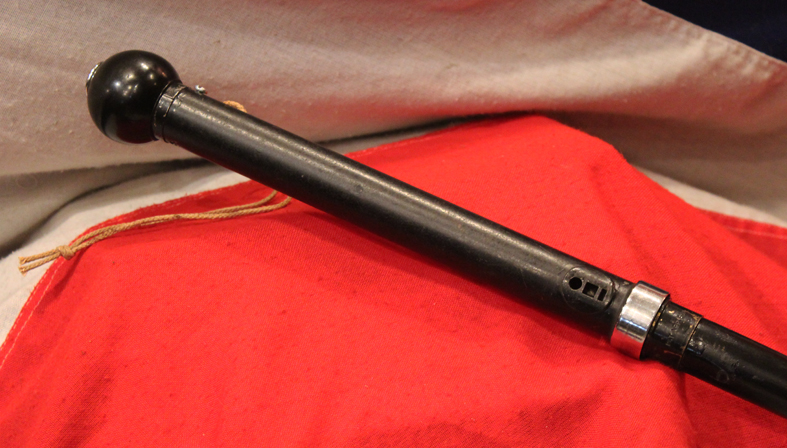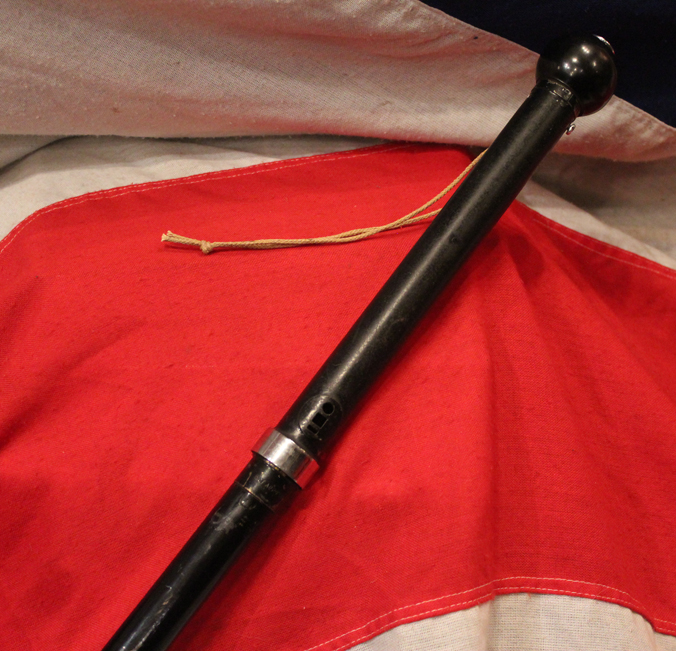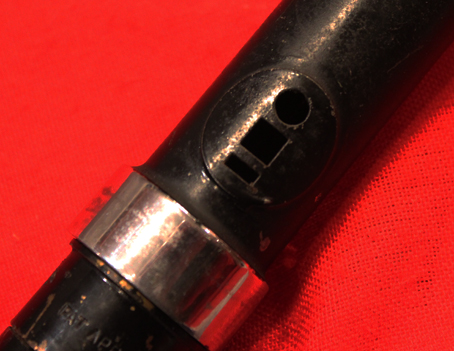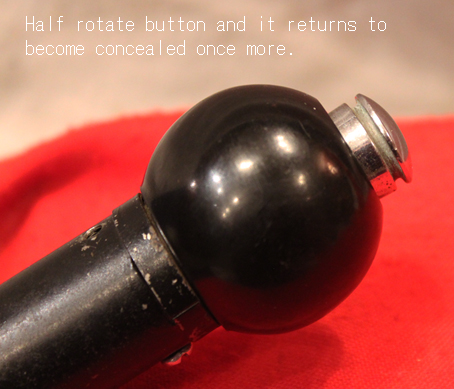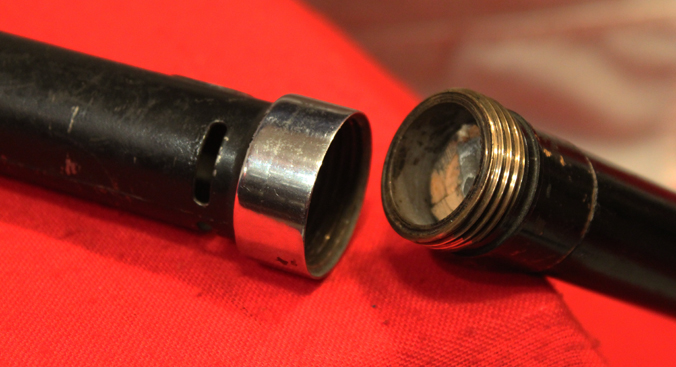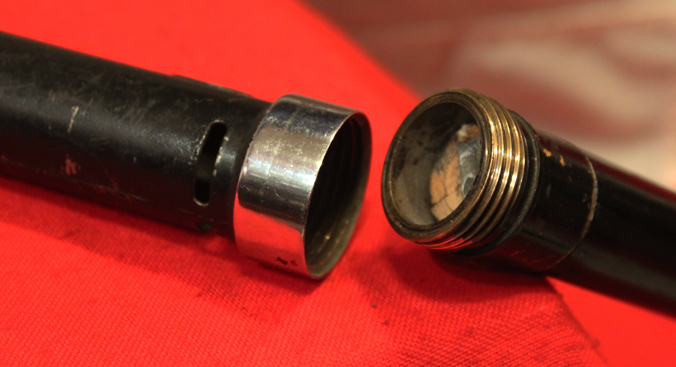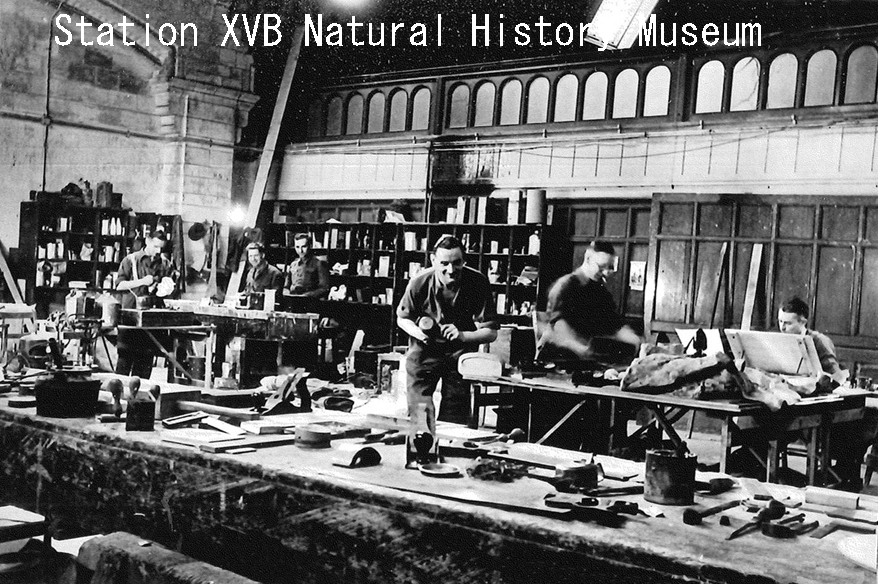A Most Scarce & Intriguing British Morse Code Signalling Walking Stick. We Have Never Seen Another Surviving Example
Black wood and metal cane with celluloid ball top and retractable spring loaded button signaller. The top section of the cane contains a battery compartment and the bottom part of the top portion has a three hole opening of differing shapes that we presume to facilitate the plugging in of a three wire cable. The celluloid and metal handle unscrews from its wooden haft. We have heard of such of pieces in the past 40 years, but never actually owned first hand one of this most intriguing and rare form of gadget walking cane, and although we were informed from its source that it may be from WW1, it appears to us to be far more likely from WW2. It has a patent pending stamp but we can trace nothing quite like anywhere through our extensive reference works or on the net. It may have been made by such as the British Secret Intelligence Service SIS for foreign espionage, but frankly we have little idea other than that. If so, it was possibly designed and made at Station XVB hidden within the walls of the British Natural History Museum. Each one of the six Station XVB rooms had their own particular theme, such as Incendiaries and Demolition Charges and the Explosives Camouflage Section. London Zoo supplied sample animal droppings relevant to the various theatres of war. Then, for Europe, plaster cowpats and horse manure would be made and packed with plastic explosives ? whereas camel dung was all the rage for North Africa. Plaster-cast coal was another favourite: leave it in the right place and the enemy would light their own explosive end. In other galleries machine guns were concealed inside fish, wireless sets in books, and country-specific clothes and shoes were made and artificially aged. A Jewish refugee from Berlin was employed to tailor authentic German clothes for agents who were only ever a few missed stitches away from having their cover blown.
The SOE's connection to the Museum dropped out of history after the war. 1 screw lacking, the other replaced, ideally needs two others
Code: 21017

